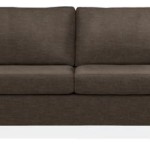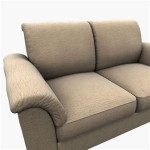Dogs Scratching Leather Sofas: Causes, Prevention, and Repair
Leather sofas represent a significant investment for many homeowners. Their luxurious feel and durability make them a popular choice. However, dog owners often face a common dilemma: preventing their canine companions from scratching and damaging these prized possessions. This article explores the reasons behind this behavior, provides preventative measures, and offers advice on repairing existing damage.
Several underlying causes contribute to a dog's propensity to scratch leather furniture. One primary reason is the natural instinct to nest. Dogs often scratch at surfaces, including soft furnishings, to create a comfortable and secure resting spot. This behavior is especially prevalent in puppies and newly adopted dogs as they adjust to their new environment.
Boredom and anxiety also play a significant role. Dogs left alone for extended periods may resort to destructive behaviors, like scratching, as an outlet for pent-up energy or stress. Separation anxiety, in particular, can manifest in excessive scratching and other damaging habits.
Medical conditions can also contribute to this behavior. Skin allergies or parasitic infestations can cause intense itching, leading dogs to scratch relentlessly at any available surface for relief. It's crucial to consult a veterinarian to rule out any underlying medical issues if scratching becomes excessive or persistent.
Beyond these primary reasons, dogs may also scratch furniture due to territorial marking. Glands in their paws release scents, and scratching can be a way for dogs to establish their territory within the home. Furthermore, some dogs simply enjoy the sensation of scratching, finding it a pleasurable and stimulating activity.
Preventing scratching damage requires a multifaceted approach. Providing adequate physical and mental stimulation is paramount. Regular exercise, interactive playtime, and engaging toys can help expend excess energy and reduce boredom. Puzzle toys and treat-dispensing balls can provide mental stimulation, keeping dogs occupied and less likely to engage in destructive behavior.
Training plays a crucial role in curbing unwanted scratching. Teaching dogs alternative scratching behaviors, such as using a designated scratching post, can redirect their energy. Positive reinforcement techniques, like rewarding the dog for using the scratching post, are generally more effective than punishment. Consistency and patience are key to successful training.
Creating a dog-friendly environment can also deter scratching. Providing comfortable and accessible dog beds or blankets can offer alternative resting spots. Covering the leather sofa with a protective cover or sheet can create a physical barrier and prevent direct contact with the leather surface.
Regular grooming can also help minimize scratching related to skin irritations. Brushing helps remove loose hair and dander, reducing the likelihood of itching and subsequent scratching. Regularly checking for fleas and ticks and administering preventative medication as needed can also address potential sources of discomfort.
Despite preventative measures, scratches may still occur. Minor scratches can often be addressed with readily available leather repair kits. These kits typically contain fillers and color-matching pigments to conceal the damage. For deeper or more extensive damage, professional leather repair services are recommended. Professional upholsterers possess the expertise and tools to restore the sofa to its original condition.
Choosing the right type of leather sofa can also influence its susceptibility to scratches. Protected or pigmented leathers are generally more durable and resistant to scratches compared to aniline or semi-aniline leathers. Considering the type of leather during the initial purchase can be a proactive step in minimizing future damage.
Maintaining the overall condition of the leather sofa contributes to its longevity and resistance to wear and tear. Regular cleaning and conditioning help keep the leather supple and less prone to scratching. Following the manufacturer's recommended cleaning and care instructions ensures the leather remains in optimal condition.
Understanding canine behavior, providing appropriate outlets for their energy, and implementing preventative measures are crucial steps in protecting leather furniture from scratches. While repairs are possible, preventing damage in the first place is the most effective approach to preserving the beauty and integrity of a leather sofa.

Repair Dog Cat Scratches On Leather

Repair Dog Cat Scratches On Leather

Repair Dog Cat Scratches On Leather Diy Couch

How To Fix Leather Scratches From Your Dog

How To Fix Leather Scratches From Your Dog

Pet Furniture Damage Top 3 Common Repairs The Leather Doctor

Repair Dog Cat Scratches On Leather

How To Protect Leather Furniture From Pets
Burrow S Pet Friendly Designs In The Wild

Repair Dog Cat Scratches On Leather








